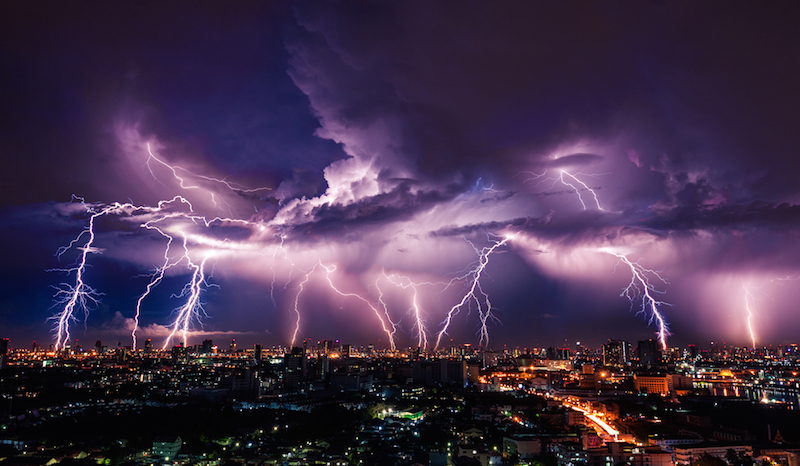Australia's Bizarre Outbreak: What Is 'Thunderstorm Asthma'?

Hundreds of people in Melbourne, Australia, experienced breathing problems during a recent storm, in what's being called an outbreak of "thunderstorm asthma." But what's behind this rare phenomenon?
On Monday (Nov. 21) evening, the ambulance service in Melbourne, called Ambulance Victoria, received more than 1,800 calls during the storm, which is about six times more than usual, according to the BBC.
About 200 calls were for cases of asthma, and 600 calls were for people with breathing difficulties, Mick Stephenson, executive director of emergency operations at Ambulance Victoria, told the BBC. "A lot of people who called last night had never had asthma before," Stephenson was quoted as saying. There were also two deaths from asthma during the storm. [9 Myths About Seasonal Allergies]
Similar events have been reported in England, Canada, Italy and the United States. For example, during a heavy thunderstorm in 1994 in London, 640 patients with asthma or breathing difficulties visited the emergency room — a number 10 times higher than the expected number of asthma patients on a given day, according to a 2012 review. About 280 of those patients had never had asthma before.
Many people who experience "thunderstorm asthma" have a common condition known as hay fever, in which they are allergic to pollen or other substances in the air, according to the Australasian Society of Clinical Immunology and Allergy (ASCIA).
It's thought that these outbreaks occur because, during thunderstorms, pollen grains rapidly absorb water and rupture, leading to the release of hundreds of small particles into the air, ASCIA says. These particles can penetrate deep into people's lungs and trigger asthma attacks, ASCIA says. Some outbreaks of thunderstorm asthma have also been linked with increased levels of fungal spores in the air.
It's also thought that gusty winds in thunderstorms help to spread pollen particles and other allergy-inducing substances. A 2008 study that looked at emergency room visits in Atlanta over a 10-year period found that there were 3 percent more visits for asthma on days following thunderstorms. The link between asthma visits and thunderstorms was strongest when the wind gusts during the storm were intermediate to high, the study found.
Sign up for the Live Science daily newsletter now
Get the world’s most fascinating discoveries delivered straight to your inbox.
It's suspected that the outbreak in Melbourne was caused by high levels of ryegrass pollen, the BBC said. On Monday, the level of rye-pollen particles in the air was more than double the level that's typically considered high, the BBC said.
People with asthma triggered by pollen can take asthma medications to prevent or treat their symptoms, ASCIA says.
Original article on Live Science.

Rachael is a Live Science contributor, and was a former channel editor and senior writer for Live Science between 2010 and 2022. She has a master's degree in journalism from New York University's Science, Health and Environmental Reporting Program. She also holds a B.S. in molecular biology and an M.S. in biology from the University of California, San Diego. Her work has appeared in Scienceline, The Washington Post and Scientific American.










